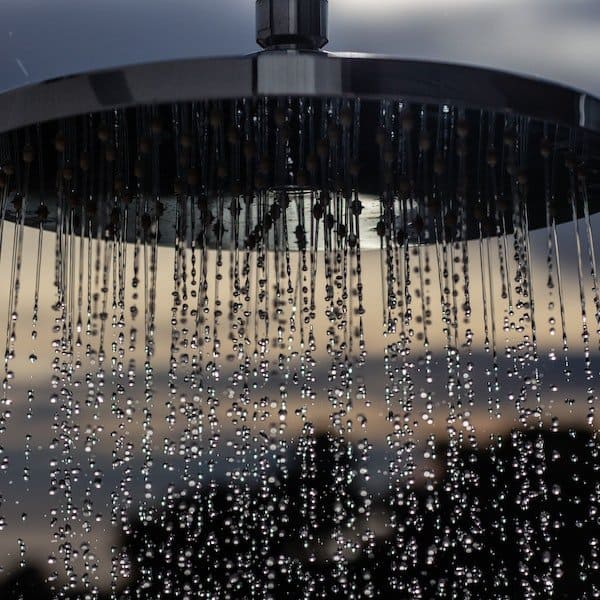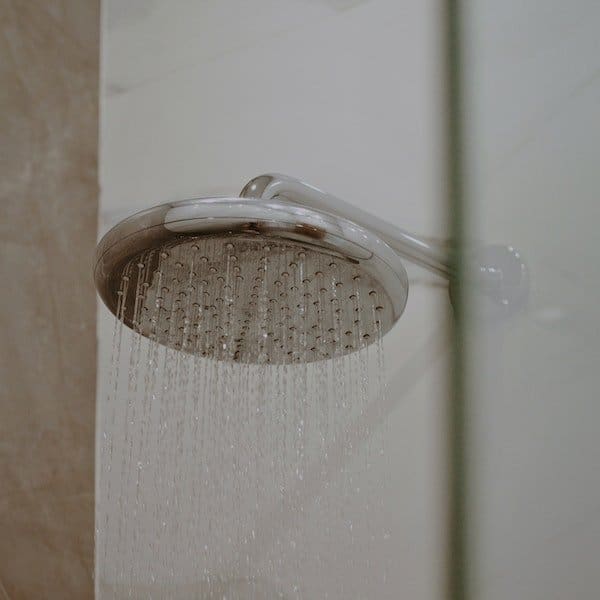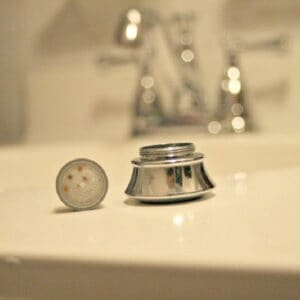How Do Shower Filters Work?
Shower filters are an essential bathroom accessory that helps to remove unwanted impurities from your shower water. The filter utilizes various technologies, including activated carbon and KDF media, to eliminate chlorine, heavy metals, bacteria, and other harmful contaminants.
The activated carbon layer in the filter absorbs chemicals in the water, like chlorine and volatile organic compounds (VOCs) that cause skin irritation. Additionally, the KDF media layer works by converting these harmful elements into harmless substances such as zinc oxide or copper sulfate. This process effectively eliminates up to 99% of bacteria present in your shower water.
In addition to removing unwanted contaminants from your shower water, shower filters also help to improve the overall quality of your hair and skin. A high-quality filter can help reduce dryness and itchiness caused by excessive exposure to hard water or other harsh chemicals in unfiltered tap water. Here is a list of the best water filters for shower that you can look over.

Can Shower Filters Restrict Water Flow?
All shower filters do not restrict water flow. If you use a water saving shower head, it may decrease the pressure of your shower, however, many filters do not interfere with water pressure. Some models are designed to improve water flow and maintain excellent shower performance while providing filtration benefits.
One factor that can impact water flow with a shower head filter is its pore size. Some filters are designed with smaller pores to capture more contaminants, which can also reduce water pressure. However, high-performance shower filters are available that use advanced filtration technologies without sacrificing water flow.
Another consideration is the age and quality of your plumbing system. If you have an older home or outdated plumbing fixtures, your water pressure may be low before adding a shower filter. In this case, choosing a high-quality filter specifically designed to improve water pressure without restricting flow is important.
How to Increase Shower Filter Water Pressure?
A low-pressure shower can make it difficult to rinse off shampoo and soap completely, leaving you feeling less than fresh. However, there are several ways to increase the water pressure of your shower water filters without having to replace them entirely.
- First, check your showerhead for any blockages or build-up that might limit water flow. Many shower heads have small nozzles that can become clogged with mineral deposits over time. Clean any debris from these nozzles by soaking the head in vinegar overnight and then running hot water through the head while gently scrubbing with a toothbrush.
- Another possible cause of low water pressure in your shower filter is a dirty or clogged filter cartridge. If you have yet to replace your filter cartridge recently, this could be the culprit behind lower-than-normal pressure levels.

How to Clean the Shower Filter to Increase the Water Pressure?
Clogged shower head filters can be frustrating. The good news is that cleaning your shower filter is a quick and easy fix to restore your shower’s performance. Here are some simple steps to properly clean your shower filter.
- First, you need to locate the shower filter, which is usually located between the hose and the handle of your showerhead.
- Once you’ve found it, gently unscrew it from the fixture using a pair of pliers or by hand. Hold onto small parts, such as rubber washers, so you don’t lose them.
- Next, rinse off any visible debris from the filter under running water. You may use an old toothbrush to remove stubborn dirt or mineral buildup on the filter screen. Make sure to rinse the filter under running water a few times until you know all the debris has been removed, and then let it air dry out of direct sunlight.
- Once your shower filter is completely dry, simply reattach it to the fixture using pliers or by hand.

How Long Should You Replace Shower Filters?
Replacing a shower filter depends on a few factors, such as water quality and frequency of use. Generally speaking, most shower filters can last between 6 to 9 months before needing to be replaced.
One significant factor that determines your filter’s lifespan is your water source’s quality. If you live in an area with hard water, minerals can clog up your filter much faster than soft water. In contrast, your filter may last longer if you have city tap water that a municipal system or well-filtered groundwater has already treated.
Another important thing to consider for installing a shower filter is the frequency of use. The more frequently you use your shower, the quicker your filter needs replacing.
Conclusion
Shower filters are beneficial in the home as they can remove impurities from the water, such as chlorine and other harsh chemicals. They come in a range of shapes, sizes, and types meaning that there is something for everyone. However, it is important to remember that shower filters may slightly restrict water flow which can be an issue for some people. Nevertheless, this issue can be easily solved by following the above instructions.

